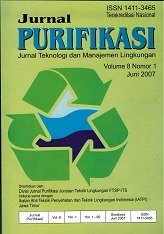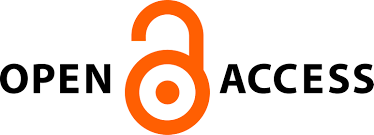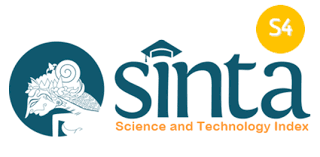QUANTITATIVE ANALYSIS OF NITROGEN COMPOUNDS IN PADDY FIELDS AMMENDED WITH UREA FERTILIZER
Main Article Content
Abstract
A field experiment was conducted to quantitatively analyze nitrogen (N) compounds as both inorganic and organic N (measured as total Kjeldahl N (TKN), NH4+-N, NO2--N, NO3--N, organic N and total N) and N pollution loading (measured as total N load) in paddy fields after the application of various dosages of urea [CO(NH2)2] fertilizer. Three urea levels (0, 200, and 300 kg urea/ha) and IR64 rice were used in a factorial designed experiments. The irrigation water in both outlet and inlet water flow was sampled after urea surface application at 0, 15 and 35 days after planting (DAP) and those of N concentrations were determined. In general, the urea fertilizer application of three N levels showed significantly increased inorganic and organic N concentrations in outlet irrigation water (P < 0,05) but did not increase total N load (P > 0,05) compared to inlet irrigation water. When no urea fertilizer was applied (0 kg urea/ha), high N concentration was measured in irrigation water, indicating that irrigated water system had carried N compounds other than urea fertilizer applied. All the N compounds increased significantly except for NO2--N and total N at 0 kg urea/ha, NO2--N and organic N at 200 kg urea/ha, and TKN at 300 kg urea/ha, which were not significantly different between outlet and inlet irrigation water (P > 0,05). These results revealed that although the three urea fertilizer application levels did not increase N loading, they have a significant effect on both inorganic and organic N concentrations in surface water runoff, thus eventually entering and polluting the water receiving bodies with the subsequent increase of eutrophication.
Downloads
Article Details
Submission of a manuscript to Jurnal Purifikasi means that the work has never been published in another journal and is not under consideration for publication elsewhere. The author hereby agrees to submit the copyright of the manuscript and its contents to Jurnal Purifikasi, if accepted for publication. Accepted manuscripts will be published in printed form where the ISSN is bound in printed form, not in online form (pdf). Authors are not allowed to publish their work in other forms (journals) without permission from the Jurnal Purifikasi manager.
By submitting a manuscript, the author is deemed to know all the rights and obligations attached to each manuscript.








